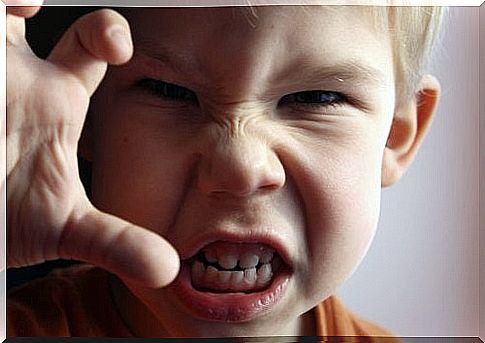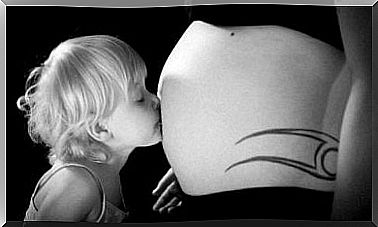Basic Children’s Emotions According To Paul Elkman – Being Parents

Are you able to recognize the different states of your little one? Normally, the basic emotions of children can be recognized at first glance, because the little ones are transparent people who let see what they think and feel. Here is some valuable information in order to be able to differentiate each of the children’s emotions.
Emotions can be divided into primary or basic and secondary emotions. The difference between the two types is that the basic emotions of children are responses to external stimuli present from birth. The others, on the other hand, are the result of growth, interaction with society and the combination of primary emotions.
What are the basic emotions of children?
There are several classifications regarding the basic emotions of children. Here are the six types exposed by Paul Elkman, an American psychologist considered as a reference in the matter.
1. Joy
It is an emotion recognizable among all and impossible for them to hide. Joy is reflected in children through laughter, enthusiasm and displays of tenderness. They are also elated and energetic when they feel it.
In general, joy in children is the consequence of good news. For example, receiving a nice gift, a surprise or even receiving a visit from a friend or loved one.
Moreover, this emotion constitutes the ultimate goal of each parent towards their children. There is no one in the world who does not want their child to be happy. Indeed, seeing him in this way is a real source of vitality and incomparable pride. Of course, this is a condition and not a permanent condition.

2. Basic children’s emotions: sadness
It is precisely the opposite of joy. Sadness, unlike the first emotion, occurs as a result of an adverse event for the child, or a situation that cannot turn out as he expected.
Some children tend to feel sad easily. Indeed, as in adults, there are children more sensitive than others. However, we must ensure that this emotion is adequately relieved and most importantly, that it is not left aside for a moment.
If not, it is time to take concrete action. Childhood depression exists and can have biological or external triggers. It is the parents’ responsibility to prevent it or at least treat it quickly to avoid dramatic consequences.
3. Fear
Fear is a basic human defense mechanism. Our ancestors could survive threats through fear, it made them alert and they took appropriate precautions.
In children, fear can occur for a variety of reasons. It can even be generated by everyday subjects, such as dogs, bathing, or insects.
In addition to gradually helping them overcome this emotion, parents must know how to differentiate fear from phobias. These are characterized by irrational behaviors, generally disproportionate to the factor that causes them.
“The basic emotions of children are responses to external stimuli and present from birth”
4. Anger
Anger, also known as rage , occurs in response to a situation that results in rejection. Usually it arises when the child feels an ‘injustice’ or simply because they are denied something they want. In this case, it could be material or a few more minutes in front of the television.
Anger is a very common emotion between the ages of 2 and 4. Indeed, it is at this moment that the child begins to interact with others and to show his willingness to make decisions.
Like the previous emotions, there are physical signs that manifest it: sweating, tight muscles or even head pain can come from a moment of rage. It is therefore essential that parents remain calm, that they know how to control the situation and above all, set an example in order to show that it is not the right thing to do.

5. Basic children’s emotions: disgust
It is also a primary defense mechanism. Indeed, it was useful for our ancestors to get away from what was unpleasant or uncomfortable to them. The disgust is, precisely, a feeling of deep discomfort in front of a food, an object or even an experience which activates and makes react the senses.
The advantage of disgust, also called aversion, is that it can easily be avoided. Often it’s enough to steer clear of what is generating it or try to think of something else.
6. The surprise
This emotion causes in children a state of alert caused by a possible threat. However, there are also positive or even neutral surprises. In other words, which are neither good nor bad.
“Surprise is usually caused by a sudden change in activity or direction, an increase in the intensity of a stimulus, or a sudden new stimulus”
It should be emphasized that each emotion has a huge influence on the life, behavior and general well-being of children.
It is essential that parents know how to understand each of them and provide the appropriate answers. Finally, it is also essential to teach children to deal with their emotions. Of course, this presupposes interpreting them, understanding them and knowing how to manage them with prudence and responsibility.









